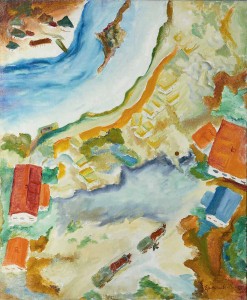Having gained valuable experience during the formative stage of their artistic careers, these artists strove to continue their work without paying any attention to the recommendations of the state bureaucracy in their later years as well. This is how they were able to import a truly meaningful and valuable humanistic content into their art work during the era of socrealism.
The view that the art of an entire era is merely a byproduct of the state’s political activity was widespread in the 20th century and remains popular in the 21th. Yet, the true content of Russian art in the 1920s – 1930s, and throughout the entire 20th century for that matter, is much deeper and more interesting.
For many artists, art transcended political dialogue and was more than simply a reaction to political events. It was beyond the scope of ideological conjectures. Art knew how to see its contemporaries in another scale of values and address a free individual with a living mind. Various approaches to art in the twenties were based on concepts that significantly differed from one another, and their content frequently reflected the conflict of differing theories and rapid change in artist’s views concerning new models of art. From the very beginning of the 20th century, art was a realm where incongruous, and sometimes antagonistic, ideas concerning the purpose of culture came into conflict with each other. The reason for this was that several deferent artistic programmes were developing simultaneously, behind which stood differing languages of art or the efforts of different cultural communities which created their own hierarchy of meanings and values. Art languages and programmes could be set against each other and intentionally seek confrontation; they could accept and tolerate each other’s existence; or they could avoid any and all dialogue, as they sought to remain within the boundaries of a single governmental, historical, cultural or political system.
Before the Revolution, the avant-garde community was already structuring itself into artists’ societies, and this practice carried over into the 1920s. Though several such societies, such as World of Art, Jack of Diamonds and The Association of Russian Artists remained and continued putting on exhibitions, the primary role was now played by newly-formed societies, which were actively frequented by young artists. 1919 saw the first exhibition of the Society of Young Artists (Obmokhu), whose core was constituted by students of A. Lentulov, A Rodchenko and G. Yakulov. The exhibition of “5×5=25” was held in 1921and included works by constructivist masters such as Rodchenko, Stepanova, Vesnin, Popova and Exter. 1921 also saw the formation of a society of a completely opposite persuasion – Makovets, which brought together artists who wanted to continue the legacy of classical traditions and the high spiritual/intellectual component of art. This society included I. Zhegin, N. Chernyshov, S. Romanovich, Ye. Belyakova, A. Yastrzhembsky and others.



